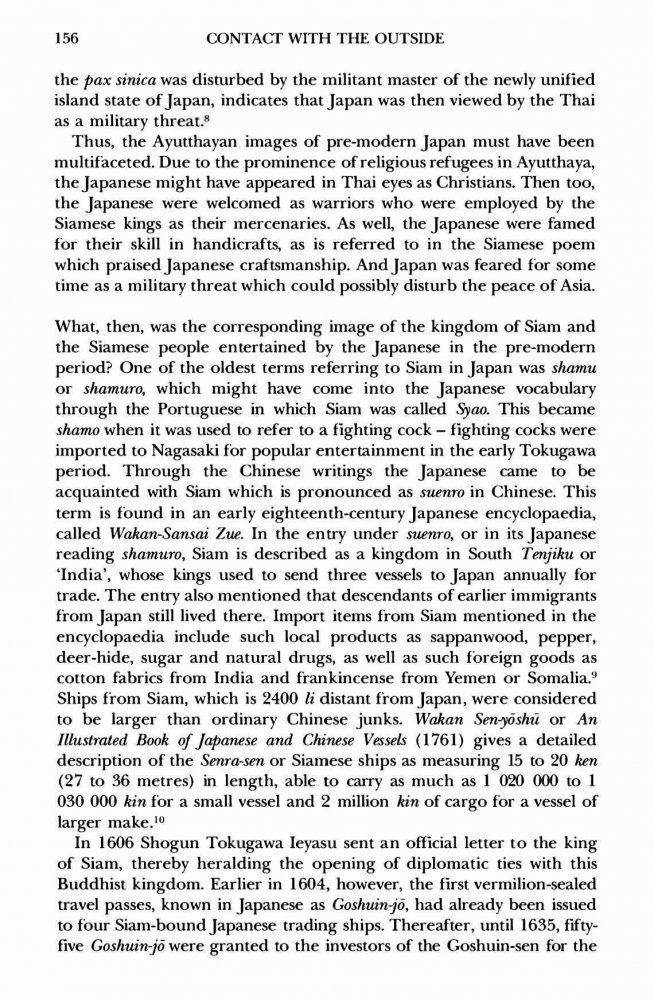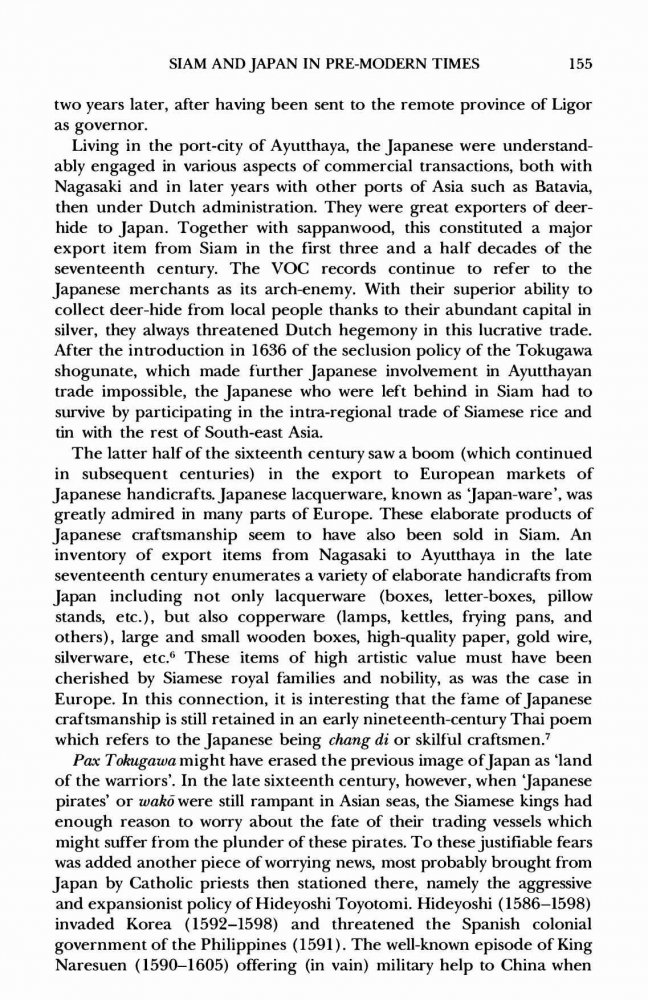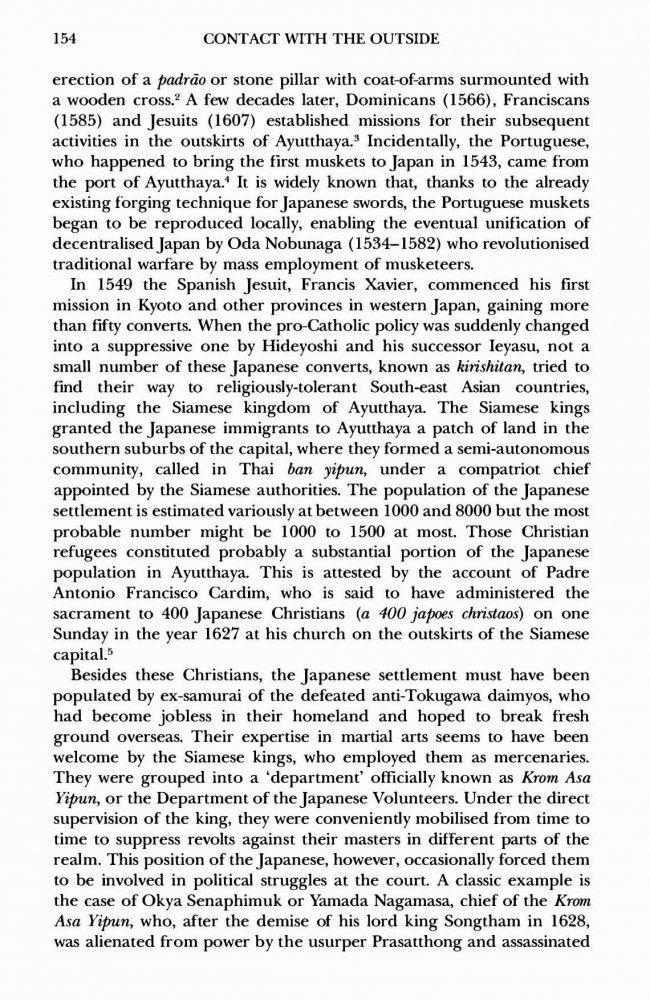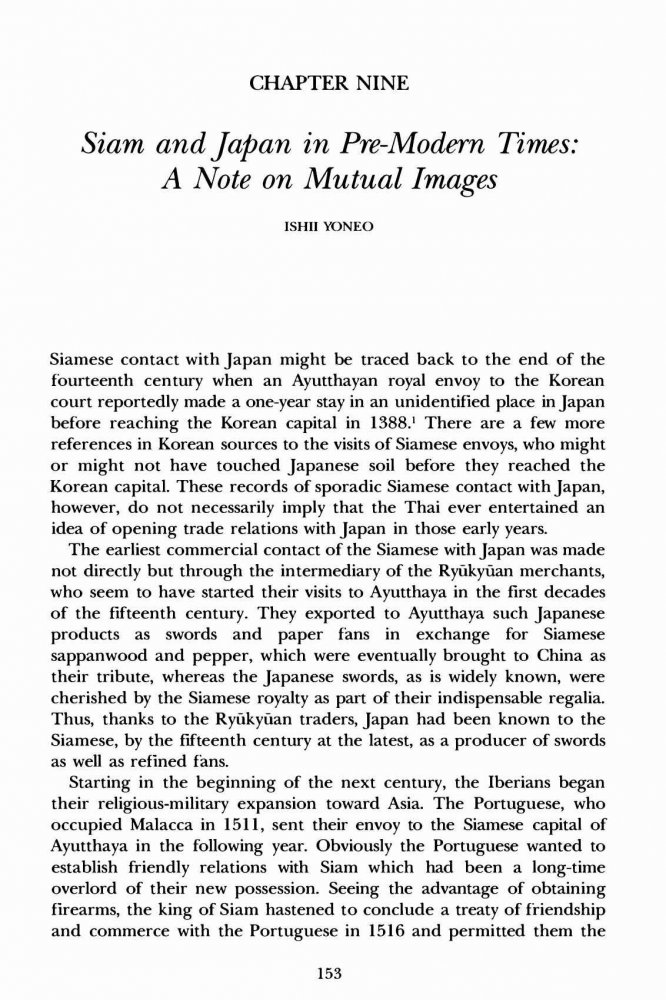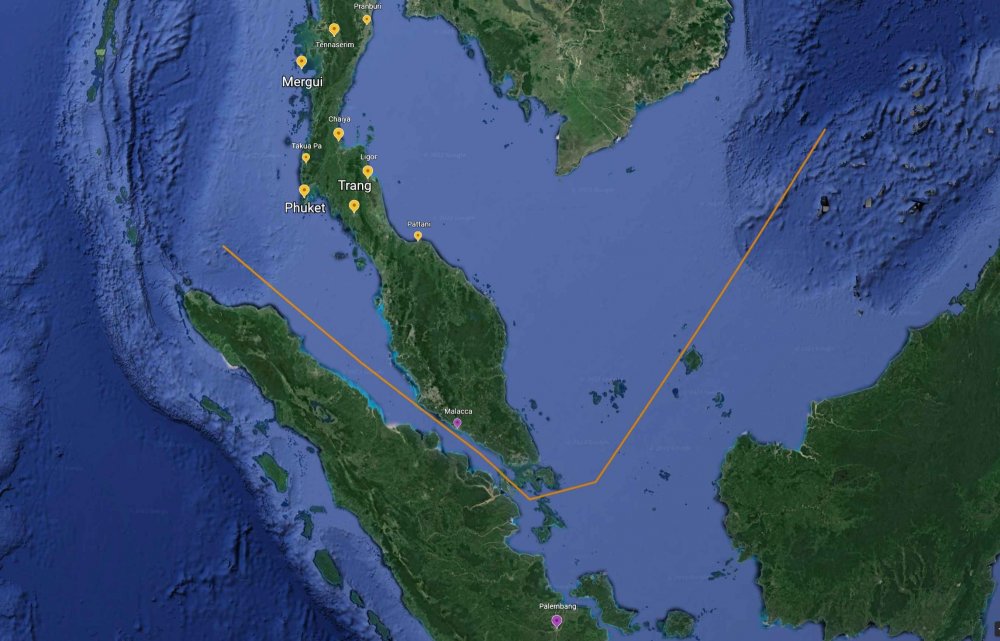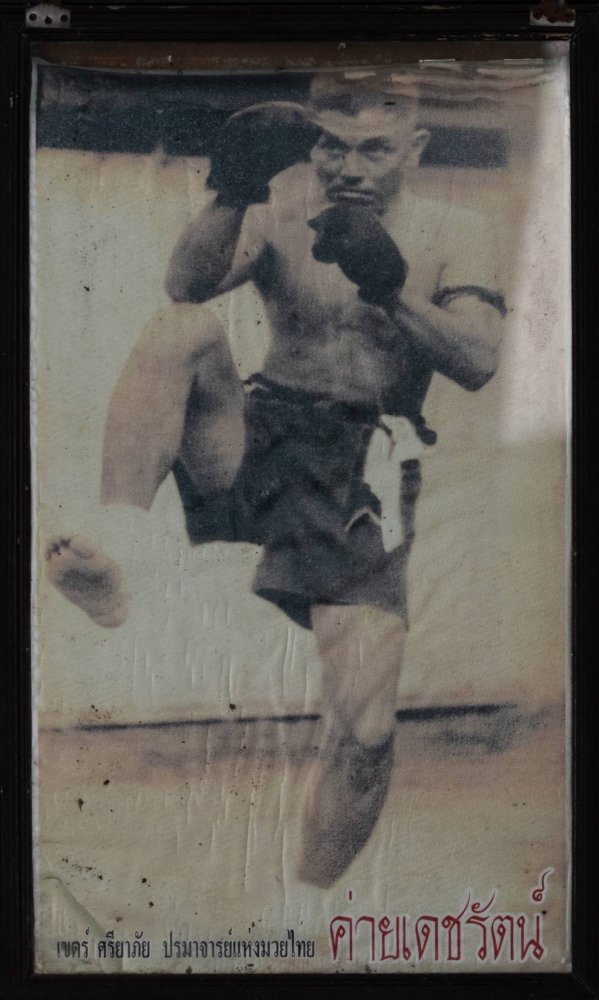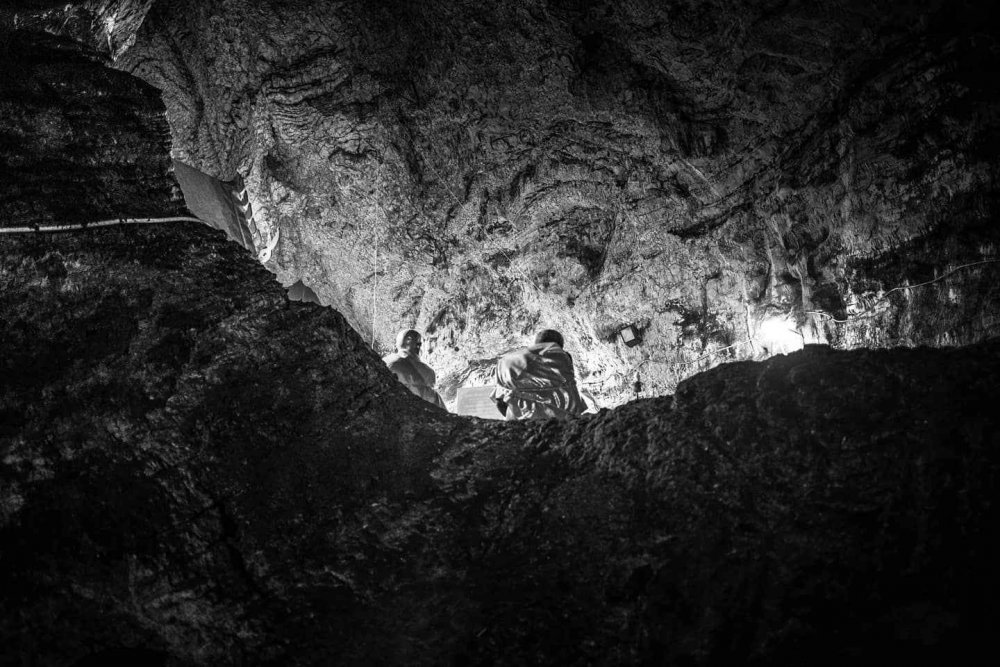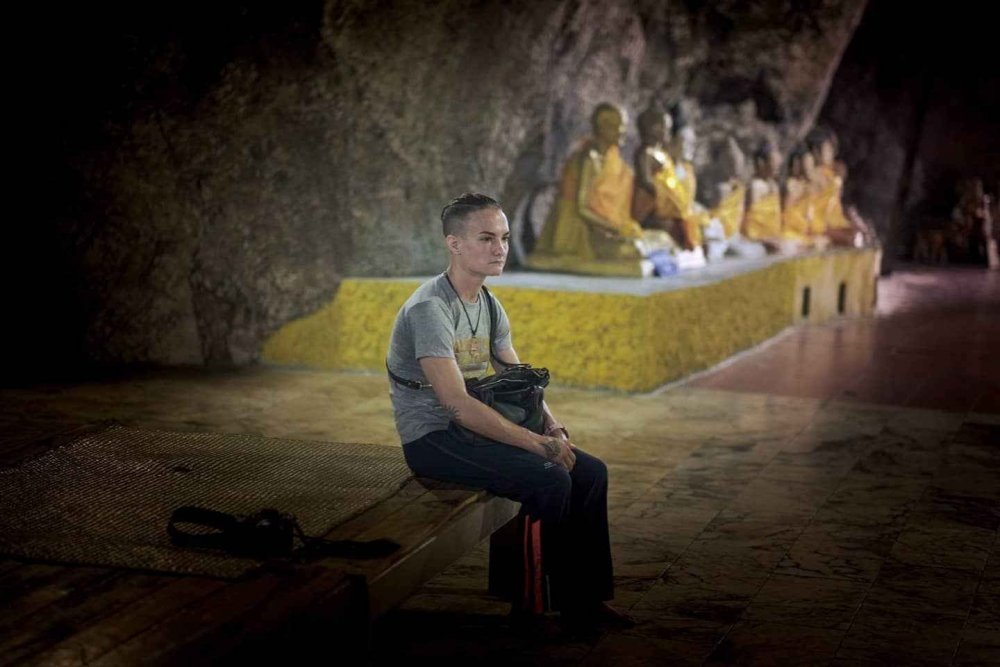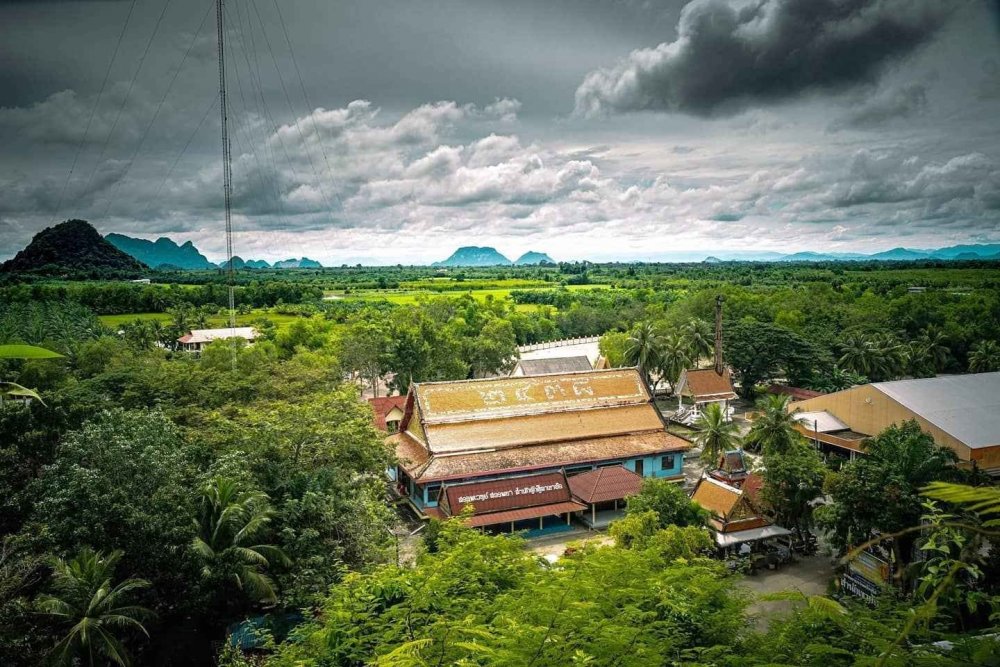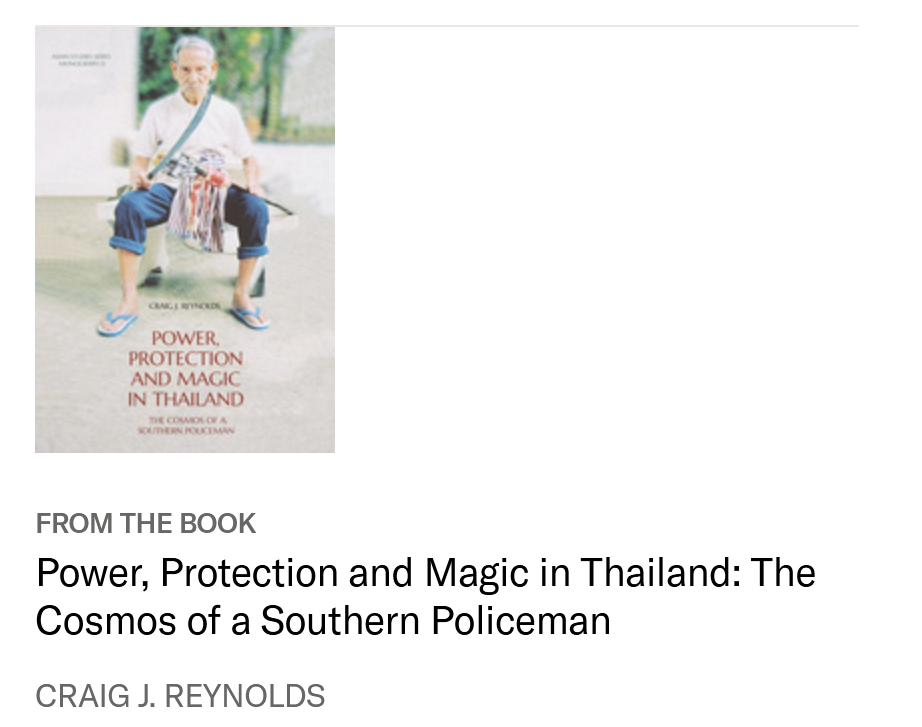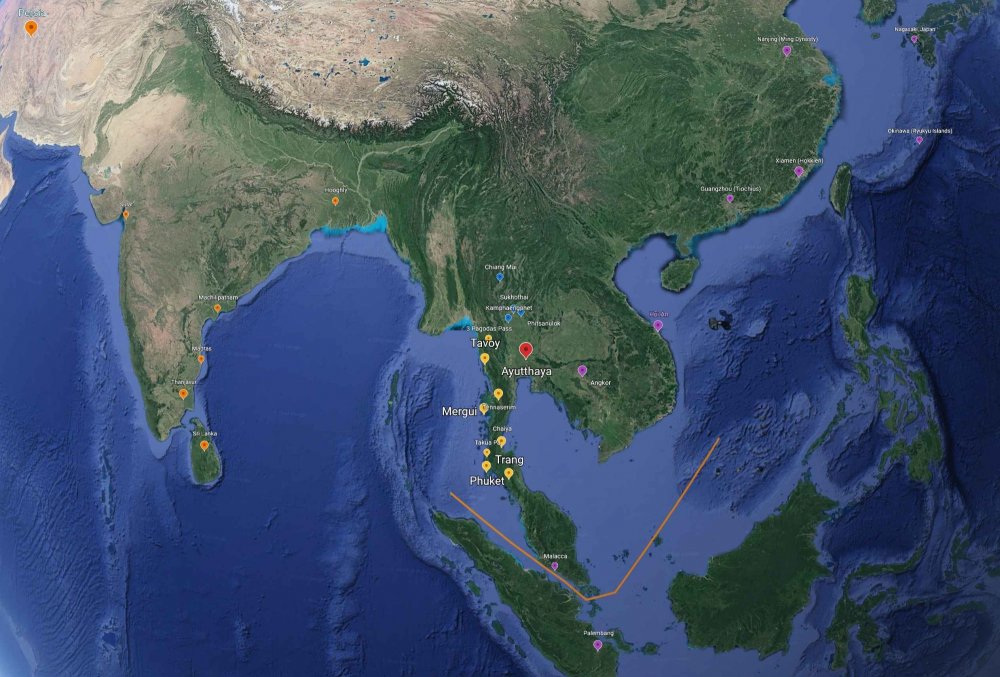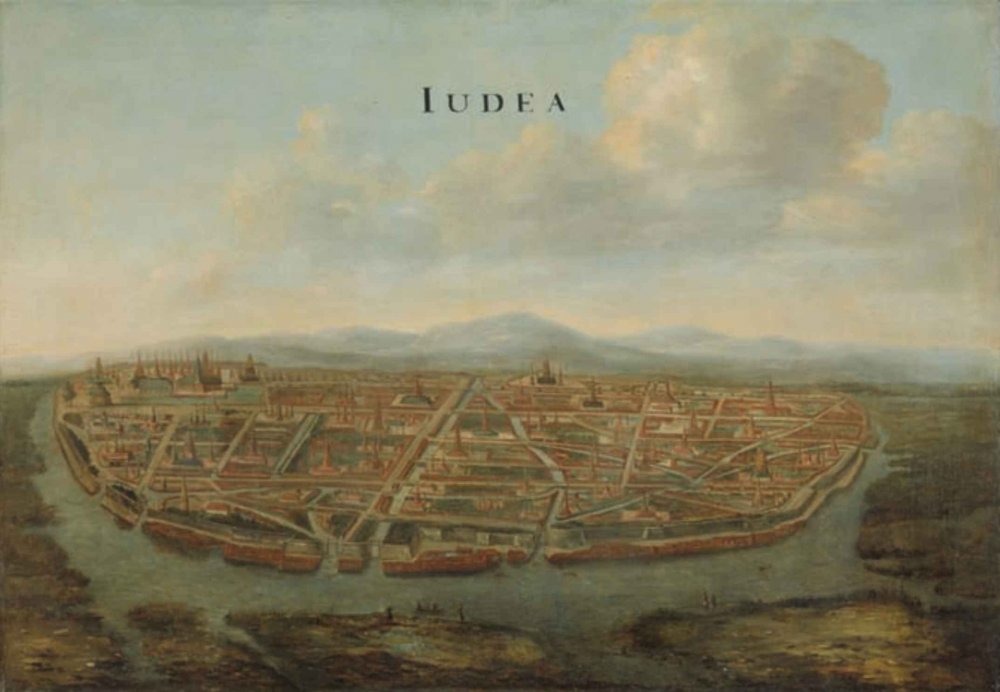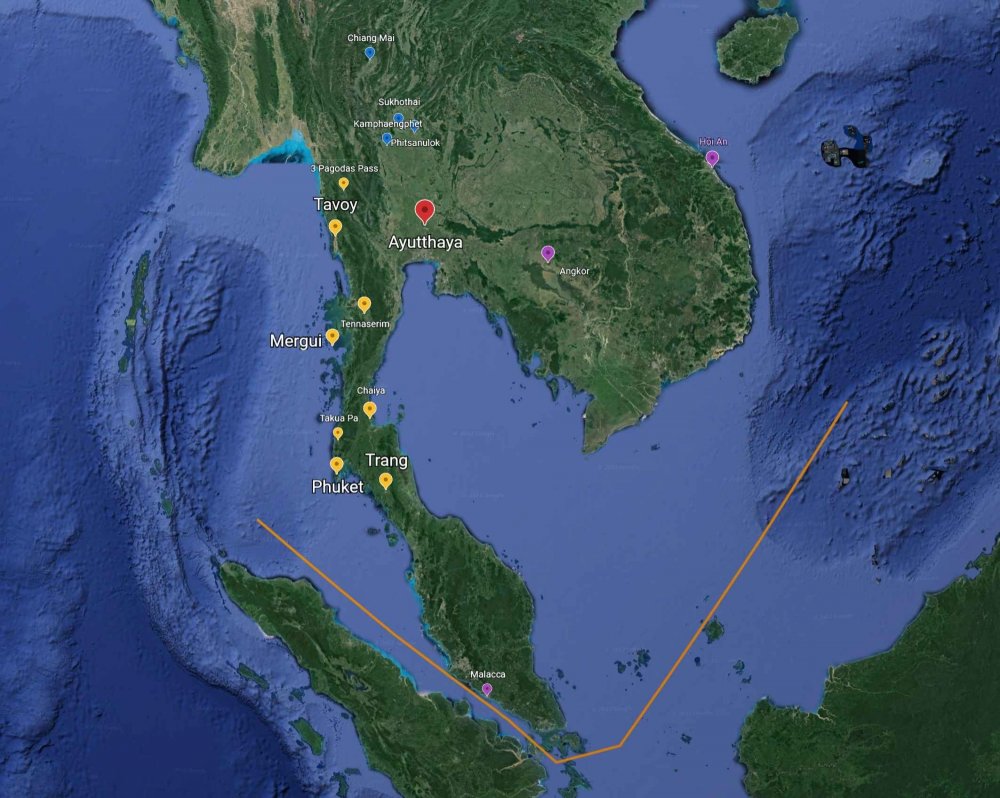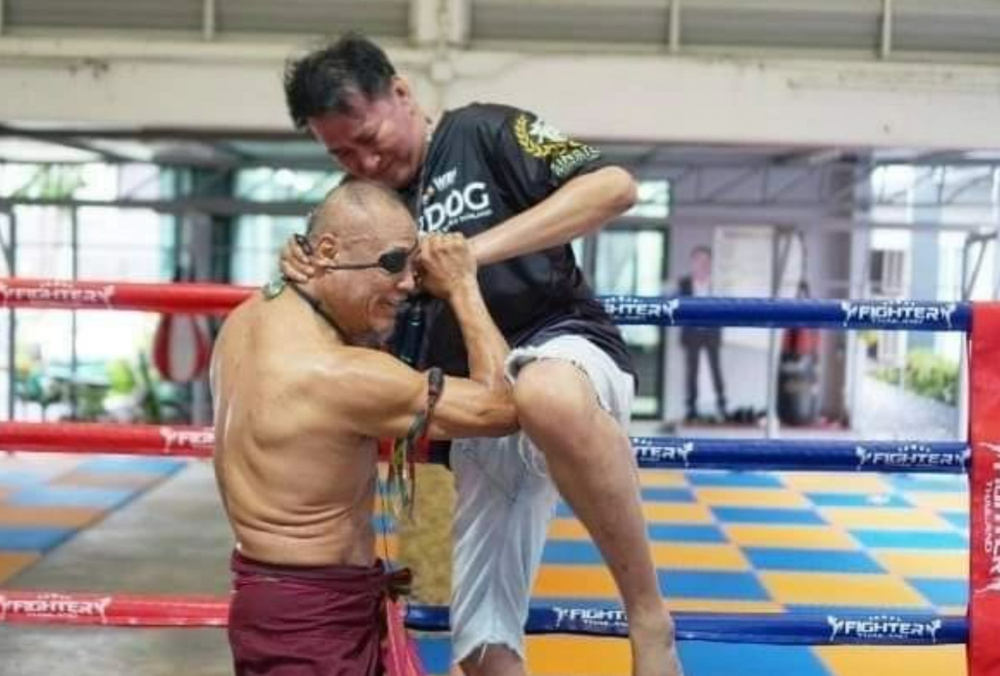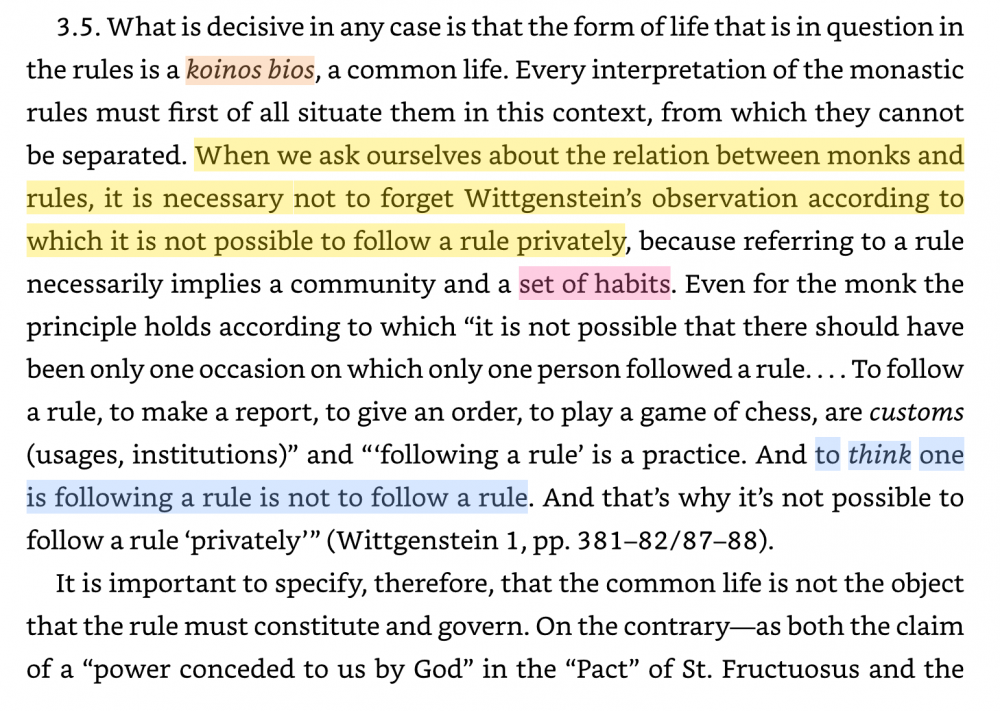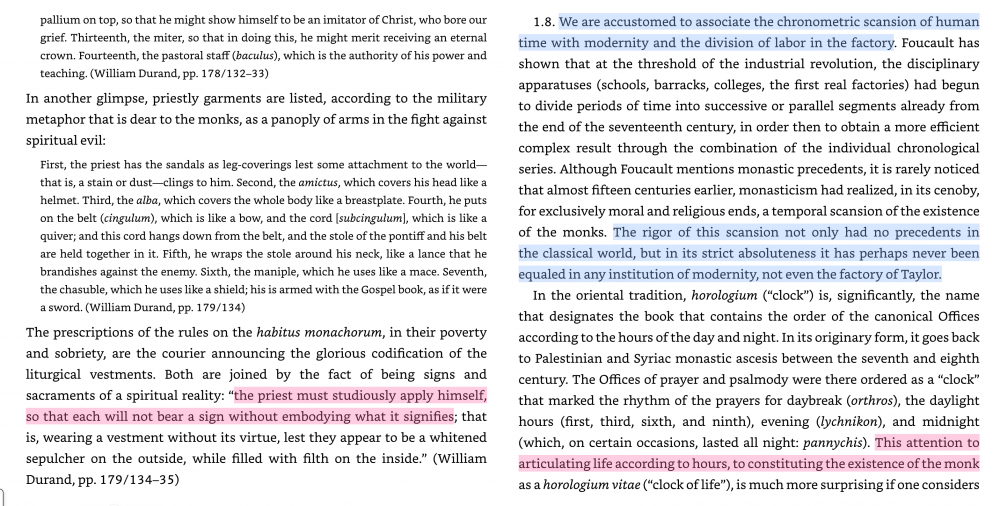-
Posts
2,252 -
Joined
-
Days Won
496
Everything posted by Kevin von Duuglas-Ittu
-
I wonder why this statue spoke to me so strongly at this moment in time. There is something generous in its formalism, open and free even though stylized. There is something unexpected. The fighter trains, ultimately or at least principally, to hold themselves together under great duress, under all the signs of violence. And in the public arena of shame. We tell the fighter that there is no shame in losing, but in a very real sense that is a lie. The shame of a loss is what puts value and risk into a fight. It's not a question of damage. In a loss one leaves the ring feeling lessor, no matter how valiantly, or expertly one has fought. It is the shame of the social dimension of a fight, and it likely goes back to some very old human experience of rite and ritual. It is because fighting is the theater of this shame - as much as we throw light beams upon the winner - that fighting acquires a near-metaphysical meaning. Or perhaps I could say theological. This is the nature of ruup in a fight. It is the hand-craved expression of Self, cut right out of the heart of a person as if they were both the sculptor and the stone, put on display under the threat of its disintegration. It is the self-assembly of dignity, substance really, not only under physical assault, but under mental, emotional and even spiritual erosion. There is a firm line that runs down from a fighter's present moment of ruup - exactly as it is presenting itself, in this fight - to the histories of shame and loss of dignity they have endured as a human being. It is a living nerve-line. This is why how all the parts communicate amongst themselves, the continuity of their being and expression, matters. There are indeed culturally shaped armatures for this sculptural expression of the Self, a grammar of cohesion and dignity as it is read to be free, and there are real-world physical boundaries, a physics of how the body moves, and compositions under which it can defend itself and attack. These make up the art of the sport (art). One builds oneself according to these grammars, and this physics, to be assembled when under the duress of what ultimately is the ring's shame. There is something about this challenge, and the juxtaposition of this particular Walking Buddha that unlocks, for me, a kind of acme of what a fighter is doing, at the deepest level. This is why matrix-like analogies of certain fighters like Karuhat, Saenchai or Samart feel so apt, or Roy Jone Jr., Leonard, Ali. And this is also why the tough, enduring men of the ring, who seem to undergo the worse of it, survive and then thrive, also communicate a liberating ruup. And everything in between. The fighter makes a physical poem of themselves under the most tested of media, the heart sinews under the shadow of shame and fear. And its true, even (or especially) the losers have nothing to be ashamed of, noble is their submission to the contest, they carry the shame of loss and dissolution, as an extra burden. This is the blessing of the ring.
-
Grace Even Amid The Most Violent I came across this statue of the Buddha (photo at top) from the Sukhothai Kingdom and like electric lines of force it came to me just how important ruup is in Thailand's traditional Muay Thai. Ruup is the quality of one's posture, the very visible form that one presents to the world, attached to idea of public expression. One's ruup is a veritable visual signal to your inner states, and in a wider sense, one's character - what one is. For many who come to Muay Thai, or perhaps consume it, this is incomprehensible. How one stands, or moves, or expresses oneself physically, aesthetically, must be secondary to things like "effectiveness", or worse "damage done". It is not understood why things like balance - perhaps falling off a strike - or, more subtly physical stiffness would much matter. But it does. There are pragmatic reasons why a fighter would need balance, would need a certain physical limpidity without which her or his capabilities would be diminished. But why, if in the happenstance of the fight there is no deficit exposed by actual damage, by the failures of the opponent or the randomness of the clash, should it matter? To me this walking Buddha, returning to Earth from a Heaven, seemed to fill in the gap in explanation. Perhaps you too will see what came to me in electric lines of visual jolt when I saw this Buddha, full of upright grace, nothing and everything in surplus. Perhaps it is that the Buddha is in motion, whereas he is usually still. Somehow this communicates itself to the image of a fighter. But it is the sense that the human being, the fighter under duress can be a visual poem. It is the dimension of fighting that supersedes the Entertainment Value of a fight. It is the dimension of meaning. Why does a fighter's posture, a fighter's tempo matter? Like Rilke's Apollo's Torso, there is in a fighter a composition, that goes well beyond intent, and thus is displayed in ruup. It is the sum total of their endless hours of training, their conflicts in the training ring, their meditations on their selves, and all of their fights. It goes to the root of them, deeply burrowed into the Past, but it is not anchored there. It is also the line of the arrow that is shot from from that flesh, and that stack of thoughts that make up their lives, into a continuity of what they will be, and in that sense what will be. The clash of the fight, the terrible flame of suffering that sparks again and again as fear mounts and turns training dumb, the clash is only there to expose the ruup of what is. The performance of duress is for that purpose, and x-ray into the unseen. This is why the fighter's ruup, the poem of the human being, is so beautiful. This is why we visit the epic men men of the past and ache toward their impossible physical poetry. Because the flint of fighting exposes the shape of a Soul, and much like the form of the Buddha, says something that cannot be said. Something unspeakable. In the line of the shoulders, in the sway of arms, in the dignity of standing, the fighter's ruup speaks. It invokes a future. In a more Western conception: Archaic Torso of Apollo We cannot know his legendary head with eyes like ripening fruit. And yet his torso is still suffused with brilliance from inside, like a lamp, in which his gaze, now turned to low, gleams in all its power. Otherwise the curved breast could not dazzle you so, nor could a smile run through the placid hips and thighs to that dark center where procreation flared. Otherwise this stone would seem defaced beneath the translucent cascade of the shoulders and would not glisten like a wild beast's fur: would not, from all the borders of itself, burst like a star: for here there is no place that does not see you. You must change your life. Wir kannten nicht sein unerhörtes Haupt, darin die Augenäpfel reiften. Aber sein Torso glüht noch wie ein Kandelaber, in dem sein Schauen, nur zurückgeschraubt, sich hält und glänzt. Sonst könnte nicht der Bug der Brust dich blenden, und im leisen Drehen der Lenden könnte nicht ein Lächeln gehen zu jener Mitte, die die Zeugung trug. Sonst stünde dieser Stein entstellt und kurz unter der Schultern durchsichtigem Sturz und flimmerte nicht so wie Raubtierfelle; und brächte nicht aus allen seinen Rändern aus wie ein Stern: denn da ist keine Stelle, die dich nicht sieht. Du mußt dein Leben ändern. I'm writing more often by hand lately. Perhaps you'll get a different feeling about my words if you watch them in time.
-
Sit Thailand vs Manop vs kem Muay Thai
Kevin von Duuglas-Ittu replied to Caden's topic in Gym Advice and Experiences
I know these are stressful decisions, and you feel like you don't have enough information to choose wisely, but the truth is that its very hard to get real time accuracy of what is happening in a gym, and even if you did, the source of that report could very well be someone very unlike you, either in fighter needs, or personality. The truth is, whatever you choose you'll be having experiences unlike anything you'll have outside of Thailand. Kem's going to give you an up-on-the-mountain, beautiful gym, hard training which may feel kind of isolated. He's an incredibly good teacher, and privates with him would be so good (as with the other 3). Its isolation can cut both ways. It can give you a once-in-lifetime experience, especially if you don't know if you'll return to Thailand again. If you are very unsure, then going to Chiang Mai may be best because you won't be stuck where you are. You could go to Thailand's gym for a day or two, and then go to Manop's gym for a day or two, and FEEL which one fits you, and then dive into that one (or, even have the option of other Chiang Mai gyms). Thailand's gym is going to be much more of a local fighters gym, with Thai boys, Manop's is going to be more western, but still small and personal, with a great technical teacher. But, if you go to Chiang Mai you'll have the city to visit and motorbike around, which might really add to your experience. In the end though nobody can really take away the risk of the choice. -
For background on the nature and use of Japanese mercenaries in Southeast Asia during this period, merchant and mercenary fused together Book Chapter 7 ‘Great help from Japan’: The Dutch East India Company’s experiment with Japanese soldiers excerpts, download below AND From the Book The Dutch and English East India Companies: Diplomacy, Trade and Violence in Early Modern Asia download the full chapter here
-
Japanese Presence and Influence In Ayutthaya Reproducing a the chapter on Japan and Siam from the book MULTICULTURAL JAPAN Palaeolithic to Postmodern EDITED BY DONALD DENOON, MARK HUDSON, GAVAN McCORMACK, AND TESSA MORRIS-SUZUKI This is a very succinct, but detailed telling of the history Japanese in the city of Ayutthaya, and their possible influence on the Kingdom, including the telling of the story of Yamada Nagamasa which sometimes is a bit embellished. It does set up the context for martial influence on Ayutthaya, including the import of valued swords, prized Japanese mercenaries, the problem of Japanese pirates, and contact with Ryukyu Island (Okinawan) culture.
-
At the confluence of 3 rivers, an annotated map of the capital Ayutthaya in 1687. French hydrographer Jacques Nicolas Bellin (1703-1772). He published in l’Abbé Prévost's "Histoire Générale des Voyages" of 1751 a map of Ayutthaya named “Plan de la Ville de Siam, Capitale du Royaume de ce Nom; Levé par un Ingénieur François en 1687” based on sketches made probably by the French engineer M. de La Mare
-
Buakaw's gym Banchamek gym (https://web.facebook.com/Banchamekgymtraining/) is probably the foremost kickboxing gym in the country, in that Buakaw himself is a kickboxing promoter and leading the way toward non-traditional K1 like fighting in Thailand. I know a few Thai female fighters have gone there to train in kickboxing to fight internationally. Also Venum gym in Pattaya seems to have kickboxing type influence (though I'm not completely sure.) A lot of Iranian fighters fight out of Venum and then seem to have Karate-type backgrounds.
-
Keep in mind, this is not a thesis or even a theory. This is just a re-framing I've experienced as a result of my research and reading, sharing sources. The historical record around Muay Thai before 1900 is very thin, so the degree to which we can project things back into that absence can be quite large. This is just bringing in new elements of context filling in some of the borders of that aporia with historical evidence and perspective. There is no attempt of proving something here, so much as maybe re-orienting the compass work of our projections.
-
Looking back to Ayutthaya in an attempt to discern individual styles or even techniques, as found in the historical record, runs straight into sheer projection, as there is almost no historical trace of fighting styles of the time. And the effort to ground regional Boran fighting styles with particular teaching lineages is fraught with mythologization and sometimes commercial interests, as if "true" lines of fighting techniques have been preserved and need to be defended through teaching trees for group identity reasons. Muay Boran is an ideologically intense and historically thin area of study and performance, frustrated by how shallow the existing historical roots are. As the legendary Arjan Surat once told us, speaking of the Muay Boran revival in Thailand, pointing to his own Chaiya teacher "If he didn't know, how do they know?" Arjan Surat (who you can study here), unlike many makes very little show about his teacher (below is a portrait he hangs of the training ring), instead he's been training ring-legends for 40 years. Attempting to reconstruct to preserve has its limits. Arjan Surat's Chaiya teacher: Bramajarn Khet Sriyaphai ปรมาจารย์มวย เขตร์ ศรียาภัย But taking up the notion of regional development of distinctive Muay Boran styles, and that there has been a cultural localization that comes from geographic isolation, we recognize the ways in which the geographically isolated Boran of rice-fields and Lao-decedent (Khmer) villages in the Northeast would have had distinctively different influences than say the Boran of the Southern peninsula (Chiaya), amid a littoral culture of trade which had been exposed to Malay, Javan & Indo-Persian (as well as later Chinese influences) for perhaps more than 1,000 years. That's 1,000 years of raid-and-trade culture, in the South. All these peninsula towns of the South were part of the substantial land-portage passage to India and Persia, a bridge between Persia-India and China. You can see Chaiya there. Perhaps more importantly, the entire peninsula was under the control of the 600 year thalassocratic Srivijaya empire (650–1275). You can see Chaiya listed below as a center of Srivijaya power. There is an 8th century Buddhist inscription in Ligor, among the earliest known on the peninsula. You can read a general summary of the Srivijaya empire here: The Srivijaya Empire: trade and culture in the Indian Ocean. It's influence on art, religion (bringing Buddhism and Brahministic practices) for centuries was likely immense on the peninsula. The Chaiya of Muay Chaiya came out of this history, a history of what has been called the "Mediterranean Sea" of the East, which positions the peninsula culture in the pathways of trade (and its warfare) itself, long after the Srivijaya had fallen. The Sukhothai Kingdom (previous to the Ayutthaya Kingdom, and upriver from it), sent as many as a 100 boats to exact tribute on the peninsula in the 1300s. Would it be too far afield to imagine that the very grounded, switching, torso rotations of present day Muay Chaiya dynamics (as taught for instance by Kru Lek in Bangkok) were also amenable to close-quarter maritime fighting, even aboard boats? If we are anchoring fighting styles in their regions, and real fighting contexts, the mixed cultures of port life, littoral culture and international trade as far as India and China, which extends back more than 1,000 years, do seem like candidates for influence. If Buddhism and temple architecture can be brought by a sea empire, one assumes that real-world fighting techniques also would cross-pollinate. While there is no direct connection of Srivijaya fighting techniques and Siam Southern styles, quite common and sought after in the 19th and early 20th centuries were practices in (religious) Magical arts. These were Brahman yants, rituals and potions said to imbue a fighter with impervious skin. Bandits and local chieftain authorities regarded these as essential fighting powers. These were reported of the Srivijaya warriors nearly 700 years before (in the year 1178, cited above source here). These practices were famous in the Wat Khao Aor in the South (Phatthalung), a historic center of the wicca of fighting magic built around a sacred cave thought to have been a place of worship for 1,000 years. It is not a stretch to imagine that these magical warfare practices, in part, came from the Srivijaya era and influence (Vajrayana Buddhism), woven together with Buddhism and Brahmanism that also was spread through the sea-faring Empire, distinct from the saiyasat magical practices of the Khmer Empire to the Northeast. (For more on the unique Brahman religious history of the mid-South.) If techniques of magical warfare practice can be transmitted, so too could fighting techniques and styles. You can read more about these magical practices in the biography of the famed early 20th century Southern policeman Khun Phantharakratchadet (1898–2006) (see the link at the bottom of this post). These are my photos of Wat Khao Aor, a kind of 19th century southern "Vedic" Magical University in terms of the fighting arts, still a very sacred place. On Khun Phantharakratchadet (1898–2006): read it online here Also as part of this thread:
-
a link to my map on Google Earth - in this graphic you can see the southern Siamese portage peninsula cities (yellow), the northern Siamese kingdoms (blue), western Indo-Persian trade centers (orange, to the left), the Malay archipelago cities (bottom, purple), and the eastern city centers on the way to China (purple left). It gives a sense of how vast the reach of cultures was in the Kingdom of Ayutthaya. You need to read the articles in the first post to specify it. In many respects this is about how to deal with historical fable. In saying that the lore of Muay Thai history is composed of fable does nothing to minimize it. In fact the stories of the roots of the art and sport go a long way towards orienting ourselves to its value, and in Thailand how Muay Thai is anchored can be of extreme importance. Peter Vail's article on the National symbology of Muay Thai is a good discussion of this: Muay Thai – Inventing Tradition for a National Symbol – Peter Vail PDF (full article) For me, as a Westerner coming to Thailand's Muay Thai I did so with a degree of naivete. Only very broad, perhaps exoticized pictures of the antiquity of the art, home-grown in the wars and battles of a faraway land - battle tested if you will - populated my conception. Visiting the ruins of Ayutthaya, or even seeing the brick reconstructed walls of Chiang Mai's inner city only gave more reality to what really were fable-istic ideas of Siam history. But, what persisted through it all was the idea that Muay Thai (and its Muay Boran antecedents) where uniquely Thai, and had developed in something of a cultural test tube, cut off from the outside world. This involved very broad notions that even things like Western Boxing were not really known to Muay Thai until fairly recently, or the idea that when Westerners came to fight in Thailand in the 1980s and 1990s this was some sort of breaking of the seal, on an otherwise closed evolution of the fighting art. Or the idea that today's pressures for Muay Thai to change under Western and globalized commodified forms were the first real radical disturbances of what Muay Thai was. Forgive the simplicity of these pictures. I do feel they are fairly common for people unconnected to a culture that is not their own. As I read I came into contact with theories of Muay Thai's origin in migrations from the North, and the similarities that are found in Myanmar (Burma), Cambodia (Khmer) and Laos. But Thailand's Muay Thai held a certain distinctness, a kind of bold relief, that seemed to cut it out away from those lineage connections. And, I was always aware that when other, culturally competing countries proclaimed their originality of Thailand's Muay Thai there was always a sort of ideologically game going on. They nearly always contain a kind of "Who's your daddy?" rhetorical force which is Asian culture is substantial. Finding and revering the root of something is of great importance, in terms of its meaning. That being said, the Kingdom of Ayutthaya features prominently in anchoring the very Thai-ness of Muay Thai's history. It was a rich, long standing Kingdom of much renown, and when the Chakri Dynasty founded itself in the new capital of Bangkok it took great care to actually build the royal edifices out of the very bricks and materials of fallen Ayutthaya. The name "Ayutthaya" was even put in the formal name of Bangkok itself. Bangkok was a New Ayutthaya, the unbroken lineage to Ayutthaya was extremely important. And even today there are Muay Thai/Muay Boran celebrations in the city of Ayutthaya on Muay Thai day. Ayutthaya is the ballast which allows the Muay Thai ship to sail, historically and ideologically speaking. It was for this reason why reading these essays were eye-opening for me. They pealed back the photos of the ruins of Ayutthaya and opened a window into just what Ayutthaya was. I've read them several times, pulling from them the brief first-person descriptions, and authorial summations which made Ayutthaya vivid. It was very different than anything I had half-conjured in my mind in the first years of my love for Muay Thai and living in Thailand. Instead of august ruins and fallen temples I saw a rich port city that was home to an incredible array of the worlds cultures. It was called "The Venice of the East" in its time, and like powerful trading ports presented a confluence of influences. And...importantly did so for 100s of years, longer than the existence of my own country the United States. If Ayutthaya in some way - symbolically, ideologically, and culturally - anchored what Muay Thai was, this was quite an anchor. Japanese mercenaries and pirates who brought their own fighting styles, fought along side Siamese warriors, and lived in the city for centuries came in contact with 1,000s Chinese junk traders and their families, who also lived in the city, in their own quarters. Indo-Persian troops who guarded the King in the 17th century, with their own warfare styles, no doubt in contact with Siamese fighters. And this is just in terms of martial events such as raiding, warring, suppressing pirates, exacting tributes, in which company was no doubt mixed. If one draws to mind the realities of what port-city life is like: gambling districts, gang crime, syndicates, drinking houses over 100s of years there must have been group on group, man on man agonism, where fighting techniques played out against each other. Even if peoples kept to their own kind in a highly structured society - and we know there were quarters for every culture - over centuries the cross-pollination in lived struggle, in back alleys and on docks had to have a certain cumulative effect of knowledge sharing. Even in the most ideologically restrained contexts when actual fighting is happening, what works is what is valued. Whether this is in raiding parties or in settling unpaid gambling debts there is little room for show. What is fascinating is that Muay Boran (Muay Thai) grew in part out of this melting pot of fighting style reality, the actual docks and floating gambling houses, as well as mercenary-enriched martial battles and skirmishes, but also retained its distinctness, and regional character. I suspect that this is something that Muay Thai (and perhaps even Siamese / Thailand) possessed, the ability to always incorporate the foreign, but to quite strongly mold it back into a very Siamese identity. To make it its own. To absorb and revalue. It does not really copy. It integrates. When Muay Boran was ostensibly "created", that is to say officially recognized by King Chulalongkorn in 1909-1910, and demarcated into 4 regional types, it actually was on it way out, so to speak. The recognition of the art was at the historical precipice of its modernity. By 1928 gloved fighting would become mandatory and Muay Thai would be reborn in the image of British Boxing, with weight classes, padded and roped rings, and fixed stadia. You can see a timeline of these events here. It was a time of a great modernization (and Westernization) of Bangkok as a cosmopolitan city of the world. In the year 1900 there were 3,000 British nationals working in the Bangkok police force. When you read about the modernizing years of 1900-1932, under the dialogue with the culture of foreign Nations from far across the world, and you read about the great trading power of the cosmopolitan city of Ayutthaya, you realize that this wasn't the first time for such a cross-pollination. New Ayutthaya was in the model of Old Ayutthaya, at the center of a great confluence of culture. There can be no doubt that in Muay Thai's history there are distinct regional styles of Muay Boran that grew out of geographic isolation. Muay Khorat (from the Northeast) was different than Muay Chaiya (from the south), and it is a suspicion that it was the building of railroad lines connecting Bangkok to Khorat (1900), the South (1907), Lampang (1916) and Chiangmai (1921) that produced an enormous flowering in Muay Thai, as styles that grew regionally, in 1,000s of festival fights came in contact with each other in the new rings and then stadia of Bangkok. Part of what is beautiful about Muay Thai, even today's Muay Thai, is that it has grown out of regional branches, branches of which experienced relative independent growth and stabilization within the cultures and customs of that province, and that these branches have periodically been brought together at various times and ways in history. The building of the railroads in the early part of the 20th century and the formalizing of the sport in the early part of the 20th century was one, the great economic boom of the 1980s and 1990s, and promotional Muay Thai of the Golden Age, another. These regionalizations of Muay Thai I believe were very important to its distinctive and rich character, the times that it did develop in isolation, in niches, in festivals. It gives it great particularity and definition. But, I think what the character of the Ayutthaya Kingdom also tells us is that these distinctive isolations also, for centuries upon centuries came in contact with other modes of warfare, other fighting styles, not in terms of adversaries (though that is no-doubt true), but in terms of cohabitation and mercenary/martial mixing. It is likely just an incredible mixed and mixing martial art. And has been for maybe 800 years.
-
Readings above, a painting of Ayutthaya, Johannes Vinckboons 1662-1663 - Ayutthaya named after the Indian city Ayodhya the legendary capital of the Hindu hero-king Rama. More or less every story of the origin, and therefore really the essence of Muay Thai relates to it developing out of warring Kingdoms, at source coming from the North in very old migrations from Southern China, or from the Khmer in the Northeast. And no doubt these are very strong cultural roots, even its foundation. But, what seems to be left out was the likely possibility it also developed out of the significant and centuries-long engagement with the extensive trade networks reaching as far as China & Japan, Persia and India, not to mention southern powers the present day Indonesian Archipelago. Very likely Muay Boran grew, not only in the context of land-bound warring kingdoms within Siam, it also grew in dialogue and contact with 600 years of mercenary & maritime trade. Perhaps what made Muay Thai (Boran) unique were its battle-field origins, but also its ability to absorb from its cosmopolitan, internationalist influences. A true "mixed" martial art? Below are three really good articles for understanding the nature of the Ayutthaya Kingdom, out of which the history and the mythology of Thailand's Muay Thai is said to have grown. I think there is a tendency, especially in countries of the West which are far removed from Southeast Asian history, to view Ayutthaya, and indeed Thailand itself in a very bound, isolated way. If you've visited the ruins of Ayutthaya, or have seen photographs, it can just feel like an architecture in the landscape. It's 40 miles from the sea. To think about how Muay Thai in its origins may have only derived from warring in the region is to really miss out on what Ayutthaya was. It was an incredibly diverse maritime trading power, with thousands of nationals from all over the world, at one point the largest city in Southeast Asia. Chinese had been there for nearly 500 years. 100s of mercenaries, if not 1,000s from every sea-faring power in residence. In the 1670s the King Narai of Ayutthaya had a personal guard of 200 Indo-Persian warriors. The Kingdom lasted for 400 years. The cultural, cross-pollinating depth of what Ayutthaya must have been, not only in terms of language and ideas, but also in terms of exposure to various fighting techniques and styles, must have been immense. Part of this is understanding that Siam (Thailand) sat atop (North of) a rich archipelago, which along with the Gulf of Siam has been compared to an Asian "Mediterranean Sea", through which ran trade routes from China to Persia. The Gulf of Thailand for 100s upon 100s of years was networked with far-reaching trade. Much of it passed south, around the bottom of the Malaysian peninsula (around modern day Singapore), but there was also a land portage passage, where goods crossed the peninsula to the North. When the Portuguese took control of Malacca, and the Southern passage (1511), this Ayutthaya-controlled land portage path to India & Persia became even more important. Trade had been thriving along this peninsula, what is now Southern Thailand and Northern Malaysia, for more than 1,000 years. I included a map of cities and towns that are mentioned in the reading, just to give a sense of location and distance. What really made Ayutthaya special (and powerful) was the way in which it connected Chinese, Japanese, Malay and Javanese, Persian and Indian peoples to the Northern Kingdoms of Chiang Mai, Lanna, Sukhothai, etc. It was an immense, cosmopolitan melting pot, at one point the largest city in Southeast Asia. That is what Muay Thai grew out of. You should be able to read JSTOR articles with a simple Google login. Ayutthaya Rising: From Land or Sea? (2003) Chris Baker This article takes on the story of how Ayutthaya rose as a Kingdom. Academically, it seems, it was thought to be a land power which harnessed the Kingdoms north of it and then eventually grow toward the sea. Chris Baker argues that Ayutthaya was actually a maritime trading power from its beginning, with very strong connections to Chinese trade (at one point the most documented trading partner of China, in terms of volume). At the confluence of 3 rivers it was a hub of trade that came from the South China Sea, with control reaching down to the Malay peninsula. Only after it grew as a trade power did it become a land power. Ayutthaya and the Indian Ocean in the 17th and 18thCenturies: International Trade, Cosmopolitan Politics, and Transnational Networks (2017) Bhawan Ruangsilp and Pimmanus Wibulsilp This article was fascinating for me, and gives light to just how international a Kingdom Ayutthaya was. It describes the political powers and machinations of Persian officials within the Ayutthayan government. Some of the most powerful men in Ayutthaya were Persians. It's not just a story of fractional politics. It illuminates just how big a role far-reaching Persian trade to the West, across the land portage, played in Ayutthaya's identity. Over these 100s of years there must have been cross-pollination of fighting techniques. "The Sea Common to All": Maritime Frontiers, Port Cities, and Chinese Traders in the Southeast Asian Age of Commerce, ca. 1400-1750 (2010) CRAIG A. LOCKARD This article takes focus on the culture of the Sea upon which the Ayutthaya wealth was partly built. For me it was an essential essay in thinking about just what Ayutthaya was, not only as a political power, but in terms of thinking about the cultural contexts in which Muay Boran (Muay Thai) developed. Along with trade comes warfare, in a broader sense. But also a rich, diverse port city culture presents endless occasions of physical confrontation, in small groups or man-to-man. Mercenary populations abounded. Piracy was a continual concern. A few caps on mercenary use from the above articles: and, (though the million man number is dubious) and,
-
A very good place to start is with Silapathai, who was one of the great kick-heavy fighters of the Golden Age. His session in the Muay Thai Library is really good: #47 Silapathai Jockygym - Master of Teep Distance (64 min) watch it here One of the great femeu fighters of the Golden Age unlocks the secret of his teep oriented dominance which made him one of the most difficult fighters to face in his day. The lessons here are precious as he unfolds the details of how to use the teep and tempo to always put the fight where you want it. Also Gen Hongthong who was a solid fighter, and is an excellent teacher: #40 Gen Hongthonglek - Muay Femeu Tactics & Mindset (70 min) watch it here The Muay Femeu (artful fighting) style is more than just a set of techniques, it's also a mindset and strategy of how to score, and how to score big. The warfare is not just in terms of damage, but of psychology, displaying dominance through skill and timing. Gen in this hour outlines how he likes to fight, and how he pulls off the biggest scores at the right time. And there is tons of documentation of Karuhat who has an elaborate kicking style. But it's quite sophisticated.
-
Helpful Videos for Beginners
Kevin von Duuglas-Ittu replied to Leto's topic in Patreon Muay Thai Library Conversations
On the teep there are two really good videos. The teep is a very important, and under trained weapon in Muay Thai: #82 Chanchai Sor. Tummarungsri - The King of Teeps (54 min) watch it here Perhaps in all the Library there is no session more devoted to, and detailing of the art of the teep. Chanchai is a Golden Age legend known for his undefeatable teep, and clearly has spent many years dissecting all the small parts that make his teep so incredible, so students can learn it for themselves. Dive into the art of the teep in this one! #55 Manop Manop Gym 1 - The Art of the Teep (90 min) watch it here An absolutely brilliant technician, Arjan Manop who is famed as Saenchai's Yokkao padman, teaches the art of the teep in fantastic detail. Some of his corrections were so small, like the timing of the plant foot, but have made big impacts on my practice. If you love the fine details of beautiful Muay Thai technique this is a session for you. -
Helpful Videos for Beginners
Kevin von Duuglas-Ittu replied to Leto's topic in Patreon Muay Thai Library Conversations
Hi Leto, welcome to the Library. There is a The Basics tag which allows you to scroll through all the sessions which tend to concentrate on basics. Sometimes these put basic principles into higher purpose, so they aren't just for beginners, and basics are really important at all levels, so everyone can get something out of them, but beginners especially. Thais like to always return to basics. You can find that here: https://www.patreon.com/sylviemuay/posts?filters[tag]=MTL%3A The Basics Every session has tags at the bottom of the post where you can scroll through related material. Among the basic sessions there are a few that stand out for me: #22 Singdam Kiatmoo9 - Making the Basics Beautiful (71 min) watch it here < this one really is a ground up walk through the basics of stance, rhythm and stepping. Getting everything right so that what you build on echoes through all your techniques that follow. Singdam provides perhaps the best progression through the basics I've yet filmed, the blueprint of his beautiful, effective style. This instruction is bottomless. Even after 5 years in Thailand there is a ton for me in this very close examination of powerful technique essentials. #34 Samart Payakaroon - Balance, Balance, Balance! (81 min) watch it here < here one of the greatest ever teaches an elementary symmetry and his philosophy about balance in all things. Atop the tower of Muay Thai legends probably stands Samart. 3x Fighter of the Year, 4x Lumpinee Champion and WBC World Boxing Champion, no fighter more brilliantly showed what femeu fighting could do. In this session he shows the foundations of how to build true balance, the ultimate key to his fighting style. #14 Chatchai Sasakul 1 - Perfecting Hands (106 min) watch it here < Chatchai is probably the best boxing coach in Thailand. But he also was a respected Muay Thai fighter in the Golden Age. He teaches a weight-transfer philosophy in strikes connected to Muay Thai Former WBC world boxing champion at Flyweight, and winner of Best Coach of the Year in Thailand, Chatchai in this nearly 2 hours of video makes micro adjustment after micro adjustment, honing in pristine technique in the basic strikes of boxing, for use in Muay Thai. It's all about weight transfer. #64 Chatchai Sasakul 2 - Elements of Boxing (72 min) watch it here < more basics from Chatchai. Honestly his sessions can be viewed many, many times. Chatchai is not only a former WBC world champion, he also is the recipient of Thailand's Coach of the Year. He is one of the great striking coaches in the world, and in this session he breaks down all the basics from the footwork on up. Nobody has a more beautiful and potent hands foundation. Watch and learn from a master. #96 Hippy Singmanee 3 - Basics of Balance, Rhythm & Footwork (75 min) watch it here < one of the slickest fighters of the Golden Age breaks it all down to how to move and rhythm through all strikes and defense. When a legend of the sport teaches you the core basics of Golden Age Muay Thai you stop and listen. These movements are essential for reaching higher levels of fighting, and Hippy - who was probably the best small fighter of his time, always fighting up - teaches these movements to his own young fighters. Build from the ground up. #60 Sagat Petchindee 3 - All the Strikes Tuned and Dangerous (101 min) watch it here < one of the best instructors in all of Thailand going through all the strikes One of the great, legendary names of Thailand, Sagat Petchyindee the inspiration for the Street Fighter character, goes through his entire striking philosophy with lots of technical correction and fine tuning. See the secret to his creation of smooth, efficient, explosive power, and witness the amazing man himself. -
What goes on unstated in this examination is actually one of its most important points. When indeed we are looking for respite from the endless simulations and representations of Life, the chains of images of what our lives should be, when we innately feel that we are surrounded by what seems a culture of false coin, or at least a certain malnourishment, or substancelessness, caught in Baudrillard's hyperreal, fighting itself, the clash of bodies and intentions, feels like one of the most deflationary acts, an anchor point of rock stability, for what is Real. So while there may be innumerable spaces and practices which might provide relieve, cloistered reals cut off from the endless duplication of image, the Thai kaimuay and Muay Thai gym is practicing an art, a craft of the body, meant to be tested body-to-body. There is something inherently truth-telling about fighting. Bodies can only move in so many ways. The clashing of wills that spark in bodies speaks to an order of that which cannot be faked, cannot be duplicated. There is a near-spiritual dimension to the art of fighting which cuts across the very domain of Capitalism, everything that speaks to Spinoza's hopeful sobriety: "We do not even know all the things a body can do." When fighters enter the ring, or even spar, there is a sense in which we have left behind representation altogether, and there are only bodies, only intent. It collapses the image-machine. Of course Capitalism works hard to reappropriate this Real, and put it under its auspice. Belts are manufactured, manipulated as signatures of "what is real". Matches and promotions chain together images to simulate authenticity, greatness and achievement, commodifying the sanctified banality of what a fight is. Fighters get caught up in representations, and use them to stake out places on the mountain of authority. Gyms, promotions, fans, scramble up upon the heap of images and commodity claims. But all of that is because there is a kernel of Real, of the physical, emotional and actually spiritual clash of the fight itself. Even in manipulated fights, in over-hyped belts, even in bad matchups or weakened rulesets, or decisions, even in the worst of Capitalism's falsity, there is the shining sense that something very Real and grounded has happened in a fight, something that defies the promotion, the decision, the belt. This is the gem of the practice of the fighting arts, and the anchor of its rite. The body is the shore of the Spirit. Clashing bodies produces the Real of the Spirit.
-
The arguments against the falsity of representation and the real of oneself likely go back to the very beginnings of language use. I often recall the shield of Amphiaraus in Aeschylus's play The Seven Against Thebes (467 BC), a shield that he left blank whereas all the other warriors had embossed fearsome figures of power on theirs. He said he left his empty because he wanted to BE fierce, not to appear fierce in battle. He refused any representation. This is no small refusal because in traditional societies images are thought to actually convey power to the user, and not just represent powers. Arguably the Franciscan order was making the exact same move as Amphiaraus. They were seeking to strip themselves of nearly all representational spirituality, and make of themselves the very substance of what religious symbology represents. To be the very thing. And, Agamben argues that this is why their strivings against property were a threat to the Church. They were undermining the very representational powers of the Church, which exercised its power through representation. This played out in disputes over whether an official priest retained moral authority even when immoral in his life, simply by virtue of his office (the office represents his virtue regardless of character), or the Church's power to signify change in real world objects through the sacrament (turning wine into the blood of Christ, bread into the body of Christ), wherein the representation becomes transformative of the real. The Franciscans sought to get beneath representation, in a way perhaps to cast it off. Agamben discusses the role of Law, signification, "essences" and the Franciscan resistance here: Much as in the Philosophy of Spinoza there is an effort to collapse the realm of representations into lived experiences and performance, and in taking up the tool use of a craftsman analogy, imagine oneself to be something like a tool in the hand of God. We find this argument at the level of Spinoza's view of the human, likening our lives to that of a hatchet. I wrote of this in this article post: Checking Heidegger’s Hammer: The Pleasure and Direction of the Whirr Seventhly, this knowledge also brings us so far that we attribute all to God, love him alone because he is the most glorious and the most perfect, and thus offer ourselves up entirely to him; for these really constitute both the true service of God and our own eternal happiness and bliss. For the sole perfection and the final end of a slave and of a tool is this, that they duly fulfill the task imposed on them. For example, if a carpenter, while doing some work, finds his Hatchet of excellent service, then this Hatchet has thereby attained its end and perfection; but if he should think: this Hatchet has rendered me such good service now, therefore I shall let it rest, and exact no further service from it, then precisely this Hatchet would fail of its end, and be a Hatchet no more. Thus also is it with man, so long as he is a part of Nature he must follow the laws of Nature, and this is divine service; and so long as he does this, it is well with him. But if God should (so to say) will that man should serve him no more, that would be equivalent to depriving him of his well-being and annihilating him; because all that he is consists in this, that he serves God. The Short Treatise On God, Man and His-Well-Being, part II, chapter XVIII “On the Uses of the Foregoing” This is the difficulty of "hand of God" imaginings. We can use them to understand spiritual labor like those of the Highest Poverty, but we also know that some of the greatest crimes of humanity have been conducted under this sort of imaginary relationship. Authoritarianism of every kind appeals to this sort of "I am but a tool" subjectivity. And, the fighting arts, in every century, have been aligned with authoritarianism, in our fractured age even more worrisomely so. This authoritarian limit serves as a circumscription of martial endeavors, perhaps, wherein the effacement of subjectivity (and morality) align with a machinic inhumanity. This is far from the tool-in-hand craft of grounded self-creation. An eye must be kept out for pre-Capitalist forms of authority which exact themselves in abuse or exploitation, in part because they hold the potential to relieve the alienations of Capitalism.
-
For much of this I've referred to the alienation of Capitalism as if it is obvious to all readers. It's true that such an alienation has become something of a Marxist/leftist trope of resistance. It's an alienation that is found and argued about at length in endless academic treatises. But what really does it come down to, and how does Agamben approach it? There is a certain level at which all the discussion of alienation comes down to one thing: meaningful, enriching work...and, the ability to meaningfully and richly live the life that surrounds that work. In this sense often ideals of craft, or craftsmanship come to fore. Someone who works with tools they are familiar with, in a lineage of knowledge of techniques and customary way of being, who creates something of value. It's being connected to one's work...and in the craft idealization, also to a way of life that surrounds that work. We can leave aside whether historical manifestations of craft and craftsmanship were more liberated than Capitalist labor forms (whether that be imagined-to-be soulless factory hours, bureaucracies, illegal sex trafficking, retail boredom, immigrant exploitation, struggling in a wage market without safety net, the examples are multitudinous). The craft example here serves more as a perspective of criticism to Capitalist labor extraction, pointing to what is missing. One is alienated from one's labor. And, perhaps more subtly (because it is more perfuse), in an age of commercialized representations of living, whether they be television shows depicting everyday life, or billboards, or product promises, or Instagram lives of sexy smiles, there is a sense in which we have come to live in a simulacrum. Everything that surrounds us, and from which we take our bearing is a representation of something (supposedly "real"), and the circulation of these images has become unmoored from anything other than commerce itself. It's just images pushing images, in what Baudrillard called the "Hyperreal" (Baudrillard an inspiration for the film The Matrix). This is what Agamben is thinking about when he talks about the loss of the ability to even use things. It is both the sense of the craft in which tools in which one is invested in are picked up by the hands and used, in a fundamentally human way, and how the things of our lives, the objects that surround us are no longer available to us. They are instead something we "own" and which we "consume". We never really use them, especially not as part of a commons, as a form-of-life. That's the context in which we are talking about the meaningful experiences of the Thai Muay Thai gym and the kaimuay for westerners. The sense of craft, of embodied and spirit-rich investment AND the sense of a world of use, of things that are in common, participating in a form-of-life, if even for a short time, is in contrast with the generalized ills or malnurishments of Capitalist alienations.
-
It is worth noting, and certainly worthy of study, that many of these counter-Capitalist experiences are likely also found in Western fighting gyms which also can trade on pre-Capitalist social forms of authority and rule following, whether they be inspired by military command, or orientalizing approximations of Asian martial arts. The transformation of the spirit in a bodily experience of authenticity in a group through rule-following can relieve the alienation of Capitalism. The question would turn to the differences between experiencing this within one's own culture, and traveling to a foreign land and submitting to them in their custom and history. As I've argued elsewhere, leaving behind the framework of one's culture can provide lines of transformation well beyond those of home. This comes from two directions: First, your person (gender, age, motivations, class) will likely be reframed in a culture you are unfamiliar with, and in this sense you can experience liberties from this reframing, or simply be blind to the constrictions placed on you (because you don't speak or feel Thai); secondly, the methods of social control and shaping just will likely be unlike those of your own culture, so rule-following itself more readily becomes your guide. There is a de-centering of the immersion in rule. Further, because you may be surrounded and synchronized with many unlike yourself culturally the sense of a base, uncultural commonalty, the "common life" may be more impactful. If training with Thais, and feel "like a Thai" for instance, this can (at least illusionarily) relieve you of determinations of race, class and gender which have shaped you throughout life. The cloth is cut differently, and more importantly, woven differently, and much of the direction of that warp and weft is something you may not recognize. The rule-following shows through. I wrote about some of the cultural difference in authority, instruction and rule-following in Thailand in this article: The Slow Cook versus the Hack – Thailand Muay Thai Development. The Thailand kaimuay does seem to lean much more towards the creation of a commons, as a mutualized experience, and less toward direct displays of authority (like overt instruction, though this is changing due to commercial pressure). This is not to say that the Thailand Muay Thai gym or kaimuay experience is necessarily more meaningful, or even more efficacious in the question of relief from Capitalist alienation and personal experiences of authenticity, as there are no doubt many in-culture spaces of rule-following mutual labor and synchronized endeavor in a commons in the West. It is only to recognize that this very likely is a rich and understated reason why training in Muay Thai and fighting in Thailand has such strong appeal.
-
By this I don't mean to say that Thailand kaimuay and Muay Thai gyms are spaces of resistance to Capitalism - though there is a very interesting suggestive history in this starting from the 1902 Religious Bangkok reforms which outlawed non-Thammayut Buddhism mahanikai practices in wats which also probably also had the effect of restricting the cultivation of Muay within their walls, moving the practice of Muay into secular camps and colleges. In that they are largely structurally pre-Capitalist in hierarchy and patronage driven the Muay Thai gyms contain practices which serve as oasis to the alienating experiences of Capitalism, with the possibility of personal transformation which is life-enriching and meaning driven. But lures of rule-following authority and authoritarianism in the fight genre always ethically haunt the liberative world. For now there is a Capitalist buffer between Westerners and the kaimuay, a layer of commerce and representation which insulates (and romanticizes) the Thai kaimuay reality, almost all western practitioners float out beyond the pure orbit of its control - though the increasing value of western fighters in Thailand is producing changes in control itself. At this point it is to recognize that the relatively pre-Capitalist forms of life of training and fighting are providing experiences of authenticity and transformation which relieve the alienation of Capitalism itself, in the shared self-suffering of a common life, and this participation is increasingly being folded into the Muay Thai gym's reality and even ancillary purpose.
-
One reason why Agamben appeals to rule following is the influence of Wittgenstein on Rule Following and the use of a Form of Life. He wants to emphasize that rule-following logically produces a common life. The common life is for Agamben associated with the commons of a cloistered life in which use is done without property. When we participate in the rules of a space we join, in some degree, the commonality of that life. We partake in it. What Agamben is setting up is a conceptual contrast between the kind of "common" use involve in rule-following (habitus) and the inability of "use" involved in Capitalist spectacle and property rights:
-
If I have swept out too far in theory or even in example, let me bring it back down to basics. What does it mean when a Westerner is told "Now do 500 knees on the bag"? And, he does them in synchrony with Thai boys in the gym who may (or may not) be contracted to the gym, and held by invisible hierarchical strings the Westerner cannot see? He/she is participating in a form-of-life when synchronizing himself/herself to the command and its performance. The bodies literally synchronize up into a rhythm, and the longer and more devoted he/she is, the more thorough the synchronization, not only in body but in spirit. What does it mean to do those knees? Are they doing them in the same way? Under the same motivations? Or, is the question: Are they undergoing similar transformations? As a Westerner syncs up not only on the bag, but to the other rules of the space: where and when one sits, or drinks, body postures when resting, the timetables of practice and signatures of effort, deference, suffering, the human sharing of the body under rule creates a sympathy of experience, and because rule-governed an authenticity, the collapsing of representation and action. With some complexity, if not outright irony, Agamben compares the temporal rigors of the 13th century monastery to what is otherwise assumed to be prototypical modernity, the assembly line of Ford and Taylor:
-
The philosopher and critical theorist Georgio Agamben writes a curious book examining in arcane detail the debates and legal disputes surrounding the Franciscan order around the 13th century. In The Highest Poverty; Monastic Rules and the Form of Life he takes on the more-than-century-long wave of monasticism which sought to strip itself of "property" and to live a life, what Agamben importantly comes to single out as a form-of-life, in imitation of the life of Christ and the apostles, a life of the Highest Poverty. What he traces is how this form-of-life ambition and practice, as it grew, came to threaten the authority of the Church it was under, and how the struggle for power and autonomy between them played out in arguments over just what "property" was. Why does he take on such a historically obtuse subject matter? He feels that somehow this legal and intellectual dispute over what "property" is, and the way in which the Franciscan order organized itself - hermetically - in a rule-governed, highly disciplined way of life, in which practically ever hour of the day was performatively accounted for in prayer, liturgy recitation, readings, worships, silences, actually presages contemporary attempts to free oneself from the alienations and power of Capitalism. Just as Fransiscans sought to hollow out a living space under the Universality of the Church, a rule-governed poverty of sacredness in pursuit of making of their lives a form-of-life, so too might contemporary humanity relieve itself of the defining authority of Capitalism and its experiences of alienation. He is pursuing a certain logic of rule-governed life and examining the ways in which it may seal oneself off, or, return one to a more human mode of existence, and he uses the disputes over what "property" is as an intellectual wedge to explore this. What comes to me in the reading is actually the way in which the traditional Thai kaimuay (Muay Thai camp) and the Thai Muay Thai gym (here, gym spaces which are structurally open to westerners and non-Thais) actually embody something of this logic of the cloistered rule-governed space, and how the rigorousness of physical, mental and (even) spiritual practice in the kaimuays and gyms does in some way reflect this division of power, authority and meaning that Agamben is invoking across the centuries. I mean this perhaps in two ways, or from two directions. The first is the way in which the traditional Thai kaimuay itself is woven from pre-Capitalist social forms (to be very broad about it, Feudal relations of patronage and hierarchy), so that the kaimuay for Thais very well might be a place of counter-Capitalist meaning making; and the second is that as those spaces and practices have come to be structurally open to traveling westerners and non-Thais an attraction of those spaces and practices is the very relief they give to the Capitalist worldview which is over-permeated with representations and simulations of living. This is the say, just as Franciscans retreated from the ubiquity of Church practices to find an authenticity of living, to make of their lives a physical, temporal and spiritual reality which was what it was doing (collapsing representation onto practice itself), stays and various devotions to Thai gyms also are this kind of reach for authenticity and transformation. What is key here, is that this may hold no matter the degree to which one makes this commitment, whether it is a traincation where you play at the beach and then do some padwork, or if you journey to an Isaan kaimuay where English is not spoken and you sleep on the floor with the Thai boys. The pull is towards an authenticity, and importantly people are having experiences of authenticity in a vast array. Here Agamben talks about how the Franciscan order disciplined life to the degree that monks became "living clocks": I think for many who have come and devoted time to the kaimuay and Muay Thai gym experience the question of authenticity becomes a primary one. There is perhaps a tendency to judge the (less committed) authenticity of others, and also to fear that your own authenticity might be judged, much as perhaps happens in let's say Buddhist meditation retreats or even yoga practices. One can always do more, be more committed, or rule-governed, more immersed, by degrees. Significantly though its best to see that more or less everyone is having authenticity experiences, and these come from the isolating, rule-governed, physically and emotionally demanding practices, the way in which the kaimuay and the gym segment off life in a structured expression. For any who are feeling that the comparison of the Muay Thai gym to a Buddhist retreat or temple is a stretch, in Thailand sociologically and historically there is actually great overlap. From the Thai perspective the idealized masculinity of the Nak Muay shares many qualities of that of a monk: read up on this here, Thai Masculinity: Positioning Nak Muay Between Monkhood and Nak Leng – Peter Vail, in fact the custom by which boys are brought to a wat to become novice monks (to earn karmic merit for their families) and may be brought to a kaimuay (to earn financial support and perhaps esteem for their families) are not too dissimilar. They involve a form of adoption into a highly regimented and challenging way of life, a form of labor which is meant to produce value and surplus. Both historically have been social practices which involve the inculcation and self-fashioning of an idealized masculinity, in a cloistered world. And both are pre-Capitalist in their formation. There has been a kind of fighting spirituality in the Thai kaimuay, historically. What is Use, What is Property? Key to Agamben's argument is how one thinks about use and property. What Franciscans sought was to live a life without property, a kind of holy poverty. In their attempt to define what they meant about use and property they appealed to the kind of use of things that animals have in the world, or children have in a family. Animals and children eat freely food, make use of the land because in a certain sense they are part of a Commons. A commons is a realm of resources to which everyone has access to, according to need. The fact of their need composes their right to use it. One can see rather quickly how this can escalate into utopian ideas about sharing and distribution, but, what is more important here is to keep an eye on the very rule-governed nature of how these commons are created. Agamben wants to argue that following rules is very different than following laws. Rules are a way of doing things. Yes, there are consequences if you break rules, and rules may not be entirely written out, but they categorically not like laws. Laws create divisions like "criminal" or "citizen". Rules are ways-of-life. And this goes into the ways in which a 13th century monastery (or a kaimuay) fashions a living experience which (ideally) does not separate itself out from its representation. One enacts what one is supposed to be, and does so in a highly heirarchized way of life. For westerners, because they largely do not speak or feel Thai, they do not read the hierarchies in these spaces. The orders which organize the life of the gym for Thais largely remain invisible to them. Instead though, they do experience the commons of a practice, of the living fight space, and they do experience the orders of training and some of its rite and ritual. And these are often experiences of authenticity, a respite from the copious simulacrum of Capitalist representations which otherwise organize a westerner's life (taking just for an example, social media representation, a recent layer upon many layers of representative, simulacrum life). Here is Agamben on how all of our (Capitalist) lives have been turned into almost tours of museums, walking through things that no longer are, representations of what is Real, with the note on the rise of tourism. Ironically enough, tourism is a powerful factor in western visits to Thailand, and the Adventure Tourism of fight training and actual fighting plays a significant role in this: This is where the question of tourism and the thirst for authenticity braid. There is a certain sense of Adventure Tourism in the Thailand Muay Thai experience, that westerners want to experience something exotic, and in that way unlike their own lives back "home". But I think as well, they are also drawn to the pre-Capitalist creation of a commons, and the rule-governed experiences of use, as they reach for a way-of-life, wherein representations are collapsed into the Real of what one is. These now, as as they are visited and submitted to, are hybrid spaces. They embody pre-Capitalist forms of life and practices of transformation, but they are also Capitalist businesses ripe with representations and commodification. And the flux of westerners, with their own blend of motivations spectrumed from the tourist to the cenobian, further hybridizes these spaces. There is no clean, clear view of exactly what is happening in them, as each is its own experiment and variation.
Footer title
This content can be configured within your theme settings in your ACP. You can add any HTML including images, paragraphs and lists.
Footer title
This content can be configured within your theme settings in your ACP. You can add any HTML including images, paragraphs and lists.
Footer title
This content can be configured within your theme settings in your ACP. You can add any HTML including images, paragraphs and lists.

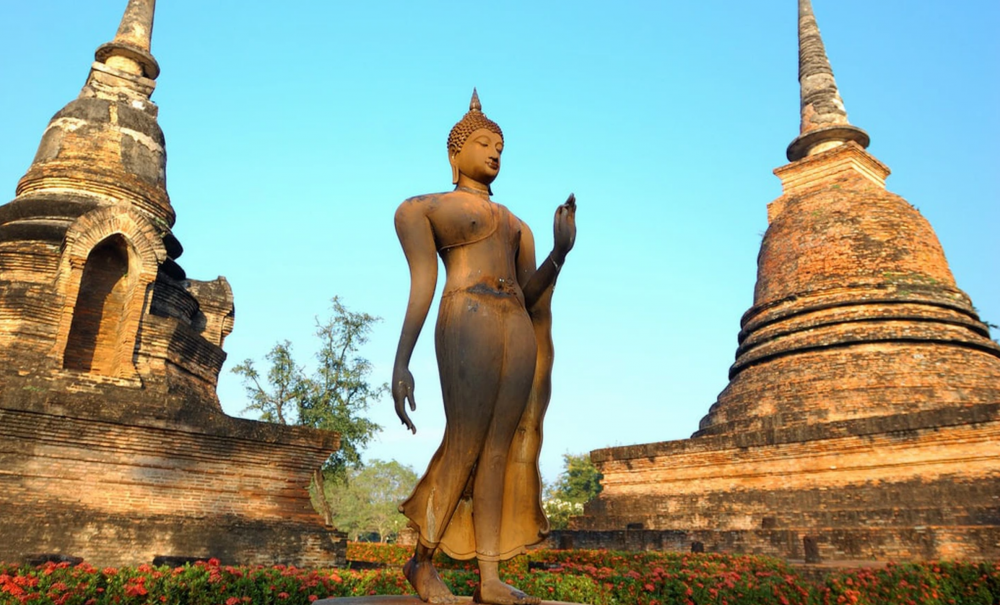
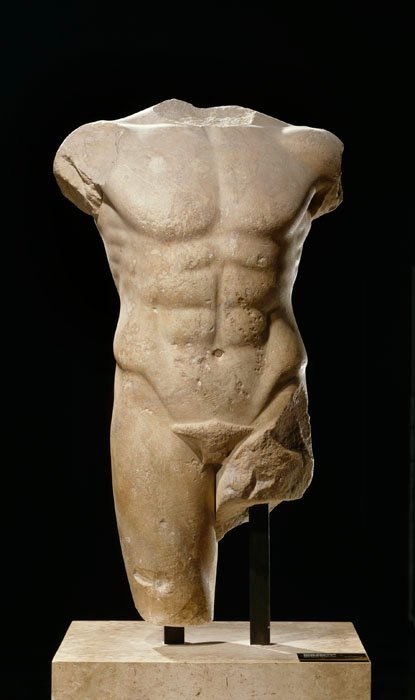
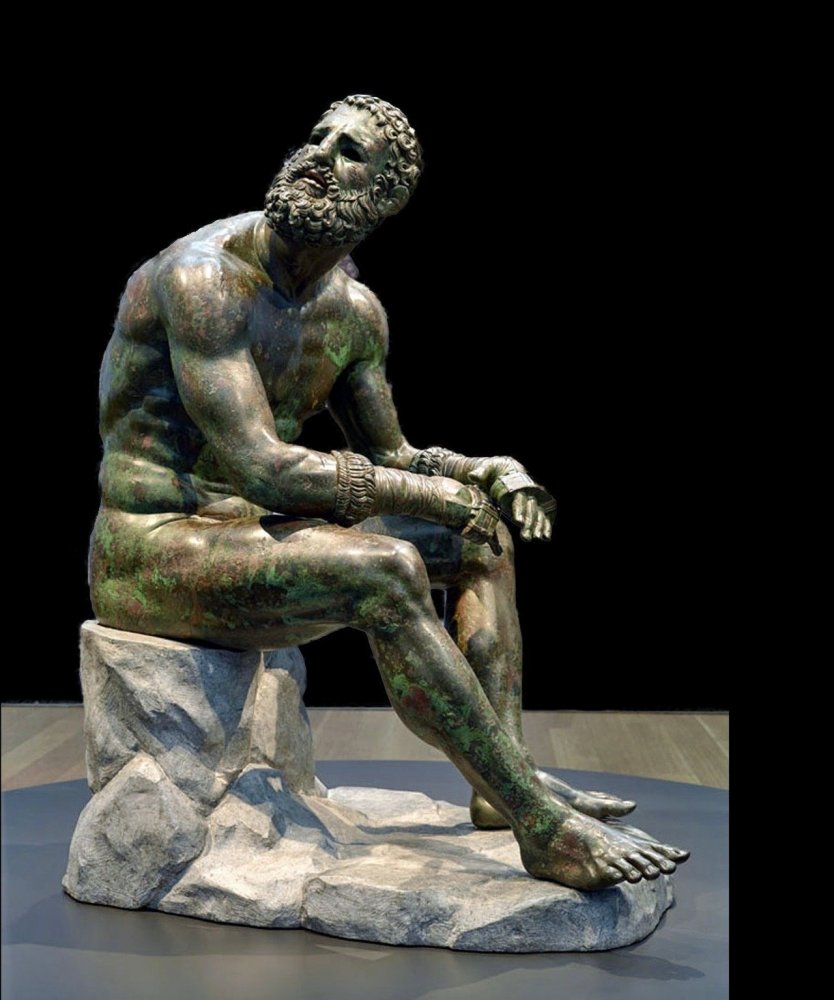


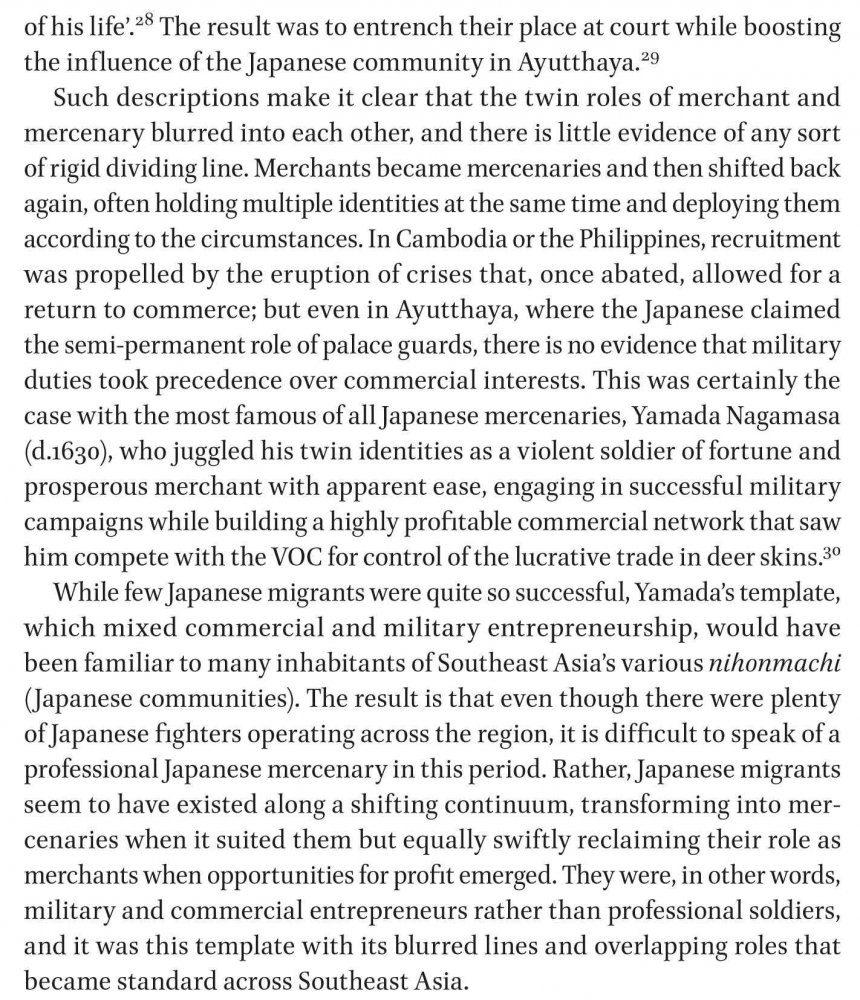

.thumb.jpg.43daa217f2d1e995c28bcb9e67f5c8b8.jpg)


